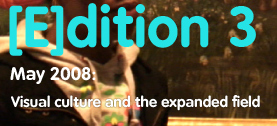Image/Sound/Text:
- Intro
- 'I am': self - identity among participants
- First Encounters
- Joining up the dots
- Domestic space and objects of significance
'I am': self - identity among participants
'I am' is a series of excerpts from the Entry Interviews of the second and third wave of participants, where, to conclude an interview about their life story, during which we had discussed themes of Britishness and identity, I asked them how they would self – identify if they could decide the categories for identification on their own terms, or indeed be free of categorisation altogether. I asked them, “If you could describe yourself in your own terms, regardless of any categories you are used to, how would you complete the sentence, “I am….”?. I chose to ask this at the end of the interview as they had already been wrestling with the contradictions that such a question entails for an hour prior to that moment, as embedded and played out within their own lifeworlds. An attempt to complete the sentence ‘I am’, however simplistic, was an attempt to crystallise those paradoxes.
This piece emerged out of various conversations the research team have had regarding the target culture surrounding museum policies, the bases upon which the categories of identification are formulated, and the disparity with the self–identification of the participants, not least in terms of how they perceived the criteria for participation in Tate Encounters.
From my sustained fieldwork with the participants in workshops, in the gallery and in 'lived' contexts, I am in a privileged position to witness how these identities influence their Tate Encounters, and conversely how their Tate Encounters are influencing the way they think about themselves. The purpose of the longitudinal video interview process is to document these changes over time and space. The use of video technology must also be reflected upon, both in terms of how the participants and I relate to the camera, and how we relate to each other through the presence of the camera. Both of these factors add yet another type of 'identity' to the filmed moment. This document is not only an audiovisual record of data, however. It also becomes an object through which data is generated – through reflection upon it and conversations around it, both with the participants and with the research team.






